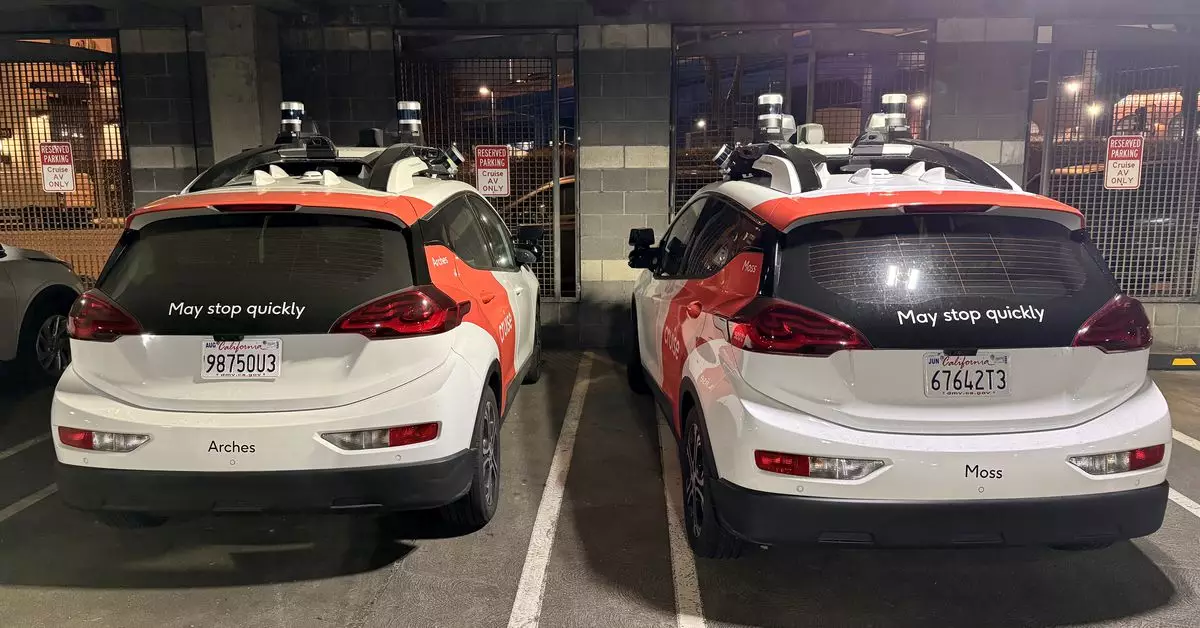In the world of autonomous vehicles (AVs), expectations can clash with harsh realities. Recently, Cruise, a subsidiary of General Motors (GM) and a company heralded as a pioneer in robotaxi services, painted a sobering picture of its financial health. For the third quarter of 2024, Cruise reported a staggering loss of $435 million, which, while an improvement from the nearly $800 million lost in the same period a year earlier, still underscores the precarious position of the company. These figures are eye-opening—not just for investors monitoring the viability of Cruise’s future but also for stakeholders curious about the broader state of the AV industry, which is currently navigating tumultuous waters.
Cruise’s struggles are compounded by an incident that severely marred its reputation. On October 27, 2023, a driverless vehicle operated by the company struck and dragged a pedestrian in San Francisco, resulting in serious injuries. This event led to an immediate hiatus of service throughout the city, prompting lasting questions about safety and regulatory compliance for Cruise’s technology. While the company has made efforts to revive its operations, including testing vehicles in Arizona and Texas and planning to introduce manually driven vehicles back into the Bay Area, its return to the revenue-generating realm of paid services remains vague.
The ramifications of such incidents extend beyond immediate consumer confidence; they also influence regulations and public sentiment regarding AVs as a whole. When companies like Cruise stumble, it can cause a ripple effect across the industry, giving regulators and the public pause about the safety and reliability of autonomous technologies.
One notable aspect of Cruise’s situation is the financial transparency afforded by GM’s disclosure policies. Unlike many of its competitors, who operate behind a veil of secrecy regarding profits and losses, GM breaks down Cruise’s financials. This disclosure reveals stark details: in the same quarter, Cruise had a revenue of approximately $26 million while incurring expenses of around $442 million. Such transparency may be beneficial for investors, as it allows for a clearer assessment of Cruise’s ongoing viability, but it also denotes a significant reality check about the enormity of resource allocation within the autonomous vehicle sector.
For years, Cruise had been likened to an albatross around GM’s neck, consistently incurring massive losses that prompted skepticism about the project’s future prospects. The $3.48 billion loss recorded in 2023 is a striking reminder of how quickly ambitious ventures can turn into financial quagmires. While CEO Mary Barra remains optimistic about Cruise’s potential, it seems that the past optimism surrounding fully autonomous vehicles is slowly giving way to a more tempered approach.
In light of mounting pressures and persistent losses, GM has executed a strategic overhaul of Cruise’s leadership and focus. Barra’s decision to replace the founders with seasoned veterans from the auto and tech space reflects a desire for course correction. Coupled with drastic cost-cutting measures, including a substantial workforce reduction of 25% and the cancellation of the high-profile Origin project, these changes indicate a crucial pivot in the operational strategy.
Adding to this tumult, the regulatory fines resulting from the pedestrian incident have put further strain on Cruise’s bottom line. Nonetheless, Barra’s insistence on discipline and fiscal responsibility bodes a cautious form of perseverance. The promise of revealing a new funding model implies a potential partnership with external entities to alleviate the financial burden of operating a fleet of autonomous vehicles.
In an arena where even industry giants like Waymo—backed by Alphabet—struggle to yield profits, the outlook for Cruise remains uncertain. GM’s overt commitment to the long-term vision of AV technology stands in stark contrast to the retreat of many other automakers from similar investments. The billion-dollar question remains: can Cruise turn the tide and carve a path to sustainability in the face of significant operational challenges?
As the company continues navigating this intricate labyrinth of innovation, regulation, and public perception, it must strike a balance between ambition and practicality. While public interest in autonomous vehicles persists, the path to profitability is riddled with hurdles that demand a responsive and adaptable approach. The journey of Cruise serves as a critical case study, revealing both the potential of AV technology and the multitude of risks that accompany such groundbreaking endeavors.


Leave a Reply